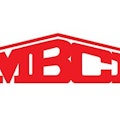Upgrading your roof with metal panels
In a recent blog post, we reviewed key considerations to help a building owner decide whether to repair or replace a damaged roof. In this post, we’ll address some ways metal roofing systems are an advantage when upgrading your roof and restoring your building to “like-new”, weathertight condition.
Installing Metal Panels Over Existing Roofing
Some owners are concerned about replacing a roof because they dread the cost of removing the existing roof. This concern is valid in many low-slope roofing situations because the new roofing membrane might not be compatible with the existing one, and could cause premature deterioration. There are, however, metal panels specifically designed to be installed directly over existing roofing. And, many of these retrofit systems can be installed over existing roofs made of metal or other materials. Avoiding removal of the old roof obviously saves on cost. However, it also saves considerable time when installing the new roof. As an exposed-fastener metal roofing system, this retrofit application also requires fewer construction components, further streamlining the installation process.
Retrofit metal panels typically feature a membrane treatment that prevents rust or contaminants from the old building materials from transferring to the new panels. This is a versatile solution for both low- and steep-slope roofs (minimum slope: ½:12). It is also very durable and can feature approvals for use in extreme weather locations, including Florida. Metal panels are available in a variety of colors that enhance the overall design of a building. Often, this “replacement metal over existing roofing” approach is the most cost-effective, even compared to some repairs. Additionally, new roofing is more likely be eligible for a warranty, while repairs rarely, if ever, are.
Upgrading Your Roof with Insulated Metal Panels
Energy conservation is on the mind of many building owners and building code enforcement officals. Therefore, adding insulation when upgrading your roof is often required to adhere to building codes. In this case, applying zee-shaped sub-purlins over the existing roof system helps support a new layer of metal roofing. In between the sub-purlins, insulation can be added to meet or exceed current energy code requirements. This system also eliminates the need to remove the existing roofing while providing an added layer (or more) of insulation to improve the overall energy performance of the building. Insulated metal panels (IMPs) like MBCI's can help keep buildings cooler in summer and warmer in winter—conserving energy year-round.
Sub-purlin systems can fit any existing metal panel, support new panels, and be made to accommodate many types of insulation between the old and new roofs. They can also support or incorporate a variety of solar energy systems where desired. Roof panel options include variety of profile shapes, textures and colors to suit aesthetic preferences.
Altering the Roof Slope
In some cases, upgrading your roof means changing the roof slope (i.e., turning a low-slope roof into a steeper-sloped roof). In these cases, metal roofing systems can be the most economical choice. Steel framing (16-ga. to 12-ga.) installed over the existing roof frame creates a sloped plane that can support new metal roofing panels. Note that the existing physical shape of the roof, the existing structural system and other rooftop conditions are usually the biggest factors in the geometry and shape of the new roof. Nonetheless, the beauty of the system is that it can dramatically improve the appearance and drainage of a building’s roof, regardless of whether the substrate is steel, wood or concrete.
Lower-slope applications (1/2: to 2:12) are typically driven by economy and designed to efficiently discharge rainwater from the roof. Higher-slope applications (greater than 2:12) often serve to improve and update the look of an existing building. They achieve this by showcasing the metal roof while also improving its drainage and durability. Once the framing is installed, standing-seam metal panels can be installed over the top, creating a ventilated attic space. This allows space for additional insulation , thus improving the energy performance of the building.
Working with Building Professionals
Any of these options are applicable over an existing metal roofing system. They can also convert other types of roofing systems to longer-lasting metal roofing, or replace an existing roofing system altogether. Of course, engaging the services of a design professional (architect, engineer, etc.) is always appropriate when considering your options. They can help properly assess existing building conditions and recommend the best overall metal roofing solution from metal panel manufacturers.
To learn more about upgrading your roof system with more durable, longer-lasting, better-draining and easier-to-maintain metal roofing systems, contact your local MBCI representative.

